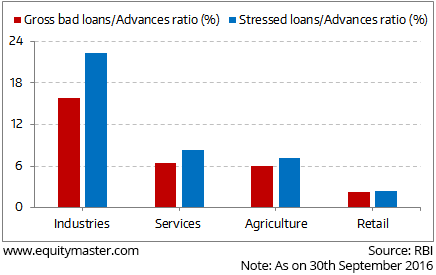Investment in securities market are subject to market risks. Read all the related documents carefully before investing
Grab Our Small Cap Recommendation
Service at a 60% Discount
- Home
- Todays Market
- Indian Stock Market News May 31, 2017
Indian Indices Trade Flat; Metal Stocks Witness Selling Wed, 31 May 11:30 am
Indian share markets are presently trading marginally lower. Sectoral indices are trading on a mixed note with stocks in the metal sector, telecom sector and energy sector witnessing most of the selling pressure. Power stocks are trading in the green.
The BSE Sensex is trading flat, while the NSE Nifty is trading down by 10 points (down 0.1%). The BSE Mid Cap index is trading up by 0.6%, while the BSE Small Cap index is trading up by 0.8%. The rupee is trading at 64.55 to the US$.
Indian indices are trading on a volatile note today ahead of the release of fourth quarter gross domestic product (GDP) numbers due later in the day. Markets participants are also keeping a close tab on cues from global financial markets.
Despite the ongoing volatility, share markets in India have continued their momentum and are trading near record high levels. Most of this rally is fueled by the optimism surrounding a good rainfall this monsoon season and the quarterly result announcements by domestic listed companies.
The ongoing rise in Indian share markets brings us to the question of how can one make money in a rising market?
Just Released: Multibagger Stocks Guide
(2017 Edition)
In this report, we reveal four proven strategies to picking multibagger stocks.
Well over a million copies of this report have already been claimed over the years.
Go ahead, grab your copy today. It's Free.

We believe a few super investors could provide the clue. These guys have an eye for multibaggers irrespective of the macro environment.
To learn more about these super investors and their stock-picking approach, download a free copy of The Super Investors Of India.
Moving on to the news from banking sector... S&P Global ratings has said that Indian banks' stressed assets are likely to increase to 15% of total loans by March 2018 even as their regulatory capital requirements will continue to rise till 2019.
The ratings agency, in its latest report stated that Indian banks' credit profiles are unlikely to improve over the next 12 months. As per the agency, banking sector's total stressed assets will increase to 13-15% of the total by the end of March 2018, with PSU banks accounting for most of that loans.
The report further said PSU banks operate with a thin capital cushion. In addition, they may be required to make large haircuts on loans to unviable stressed projects, the regulatory capital requirement will continue to rise till 2019, and profitability will remain subdued. Not very encouraging for PSU bank stocks.
Please note that bad loans at state-run banks have grown more than Rs 1 lakh crore since April 2016 to Rs 6 lakh crore as of December 31, 2016. And Indian industries form a huge share of these bad accounts, as can be seen from the chart below:
India Inc in the Centre of the Bad Loan Storm
To tackle the above problem, the Reserve Bank of India is pondering over initiating tough measures against willful defaulters.
While RBI's proactive measure to tighten NPAs is proactive, banks need to take their share of blame. In one of our recent editions of The 5 Minute WrapUp, we had highlighted how the banks' return ratios had deteriorated due to their profits written off on account of NPA provisions.
The RBI has done well to focus its attention on the willful defaulters. However, this seems to be a curative measure than a preventive one. For the bad loans problem to be solved, the root cause i.e. the initial lending process of banks needs to be put in order.
For information on how to pick stocks that have the potential to deliver big returns, download our special report now!
Read the latest Market Commentary



Equitymaster requests your view! Post a comment on "Indian Indices Trade Flat; Metal Stocks Witness Selling". Click here!
Comments are moderated by Equitymaster, in accordance with the Terms of Use, and may not appear
on this article until they have been reviewed and deemed appropriate for posting.
In the meantime, you may want to share this article with your friends!